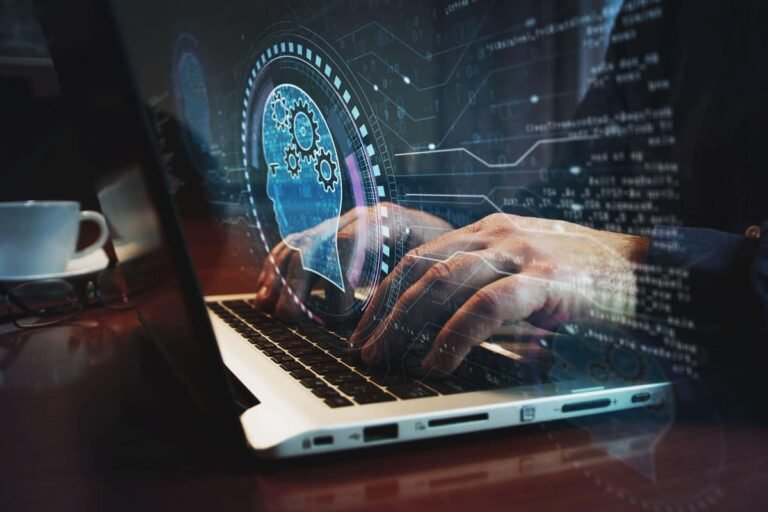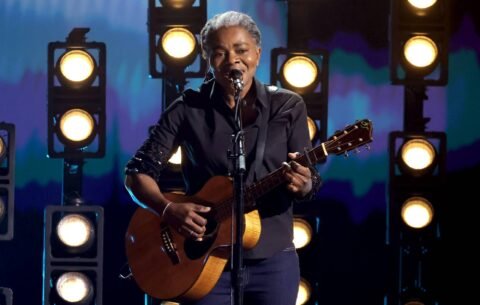
According to legend, Paul McCartney rolled out of bed in 1964, having dreamt up a new melody. Originally convinced he had plagiarised it, he waited a few weeks before laying down some new lyrics and giving his new tune a better title. Scrambled Eggs became Yesterday, one of the biggest hits of all time.
Yesterday celebrates the glorious randomness and seemingly divine intervention in the music writing process. At the same time, it shows how provenance and authorship is interwoven with the art of creation and why there is such a fierce debate around generative AI and copyright law.
The current stand being taken by prominent creative figures like Sir Elton John and Dua Lipa should not be misinterpreted as anti-tech or anti-innovation. Like owners of anything, artists just want to ensure they are properly paid.
And for good reason. Since Little Richard sold Tutti Frutti for $50 artists have been ripped off by scurrilous agents, promoters and publishers. The Beatles’ rights were passed from one corporate entity to another. Fast forward to June 2025 and Taylor Swift spent $360m reacquiring her master recordings.
There is no going back to a pre-AI “normal”
Despite the value of the creative economy, governments in the US and UK are simply disinclined to support any regulation that holds back AI development.
In May, the Head of The US Copyright Office was fired by the Trump administration after recommending that platforms dealt fairly with intellectual property owners.
In the new realpolitik, Silicon Valley, Silicon Valley is the front line of competition with China, and countries looking for trade deals had better fall in line.
AI is not going to be placed safely back in its box. The vulnerabilities and risks faced by those who work in the creative industries are unlikely to improve.
Indeed, even the current legal battles are a likely prelude for commercial settlements. The music industry will lead this transition, having been battle-hardened by its clashes with platforms like Napster, Spotify, and YouTube.
While Hollywood studios like Disney and Universal fight to protect their intellectual property in the courts, they are also compelled to embrace the cost-saving potential of AI-driven filmmaking.
Understanding how AI seeks to replicate human creativity is an essential starting point.
Describing how something like a song is written is inherently challenging — much like explaining why a joke is funny. However, there are fundamental elements that machines build upon.
At its core, creativity relies on absorbing and internalising patterns through reading, watching, and listening.
Malcolm Gladwell famously suggests that it takes 10,000 hours to become proficient at anything. Deep learning models — known as neural networks — bypass this long learning curve by being trained on vast amounts of human-created content all at once.
Much like the human brain develops ideas, these neural networks analyse patterns through layers of deductive reasoning.
When prompted to “write me a romantic poem,” AI functions similarly to predictive text, generating infinite possible responses.
None of this is necessarily new mathematical thinking, but the computational power required to create a funny video on Tik Tok reflects why AI accounts for over 3 per cent of global energy consumption, and rising.
The main cultural charge against AI is that it chews up human knowledge and just spits out derivative and soulless “slop” in return.
If we follow this dystopic path, our cultural landscape will be overwhelmed by a stagnant deluge of formulaic compositions by wannabee creators, making it harder for truly original voices to stand out. Humans will lose the incentive for personal development via creative expression.
I am less sure. The rapid pace of AI advancement indicates that it will increasingly refine and correct its own imperfections.
Audiences themselves simply may not care. A recent report showed that 82 per cent of people were unable to distinguish between AI-generated and human composed music.
Heart on My Sleeve recently went viral but turned out to be a deep fake of Drake and The Weeknd. Another viral hit Ballerina Cappuccina was composed by a fictitious Italian teacup, leading the New York Times to wonder if a new entertainment franchise had been born.
We also need to be honest that a lot of popular content has always been disposable.
A more uncomfortable point might be that even the best art is ultimately derivative in the way it builds upon different traditions as inspiration. The latest Netflix drama continues to draw from ancient Greek archetypes and modern music remains rooted in the chord structures pioneered by blues guitarist Robert Johnson.
The composer Howard Goodall puts it better, helpfully defining the true nature of copyright “The Beatles, like Bach, borrowed here and there with unabashed enthusiasm and made it all their own…. but …it always sounded like The Beatles”.
Any economist would tell you that an abundance of supply also does not equate to valuable demand. YouTube and Spotify might be overwhelmed with AI creations but there is after all only so much we can consume.
Entertainment will likely remain a hit-driven business and spraying data-driven creations at the problem does not necessarily assist with beating those odds.
AI sceptics often invoke the concept of a “data plateau” — the idea that most machines will soon exhaust the available pool of human knowledge.
Those AI-first creators looking to bypass Gladwell’s hours of training should also be aware that anything created purely by an algorithm is itself unlikely to have any legal protection.
The future cultural landscape will likely be strikingly similar to the present, where the majority of content will never be seen or heard and value will disproportionately stick to the most popular.
AI does not ultimately offer a shortcut to artistic excellence
Technology always poses a productivity fallacy. Workplace automation was expected to free up time for professionals, yet we find ourselves busier than ever, unable to turn off and shifting from repetitive to more complex tasks.
Creatives are equally now presented with even more ways to wrestle with originality and perfectionism.
The Beatles recorded their first album in just nine hours; three years later, the Beach Boys spent eight months crafting Pet Sounds — with new technologies expanding the art of the possible.
Despite the current controversies around use of AI in films like The Brutalist, It is simply unrealistic to assume that ambitious artists will refrain from exploring the creative and commercial opportunities that AI presents.
The current fascination with AI-generated parodies will likely give way to the pursuit of enduring creative works.
Artists could even think of developing new AI personas that expand their body of work whilst providing brand safety to their original body of work.
As Ziggy Stardust, David Bowie was able to explore new creative paradigms with a degree of freedom from the expectations of his fans. Bowie was the quintessential multimedia artist and one can only wonder what possibilities he might envision.
Art is also about the artist
Ultimately, AI can generate art, but it cannot generate a following. Fandom is often driven by the creator’s persona, the cultural context of their time, and the emotional experiences in our own lives.
Great tracks and movies sticks with us because they were the background to the moment we fell in love or had our hearts broken.
The artist wins — not because they are faster or more efficient, but because they are human.
Art in all forms will likely continue to be shaped by the best talent. Those who are grappling with it should now start to consider the possibility that, in the right hands, AI, like most other technology innovations, could make it even better.
Paul Kanareck held leadership positions across the creative industries including ITV, The Guardian and Warner Bros. He is currently studying AI at Oxford University.





